
I’m excited to share some tasty recipes for those on a low histamine diet. These dishes are perfect for anyone looking to reduce their histamine intake while still enjoying delicious meals.
A low histamine diet can help manage symptoms like headaches, skin issues, and digestive problems for some people. The recipes I’ve picked are not only low in histamine but also full of flavor. They show that eating this way doesn’t have to be boring or limiting. Let’s dive into these yummy and healthy meal ideas that can make following a low histamine diet easier and more enjoyable.
1. Quinoa and Veggie Bowl
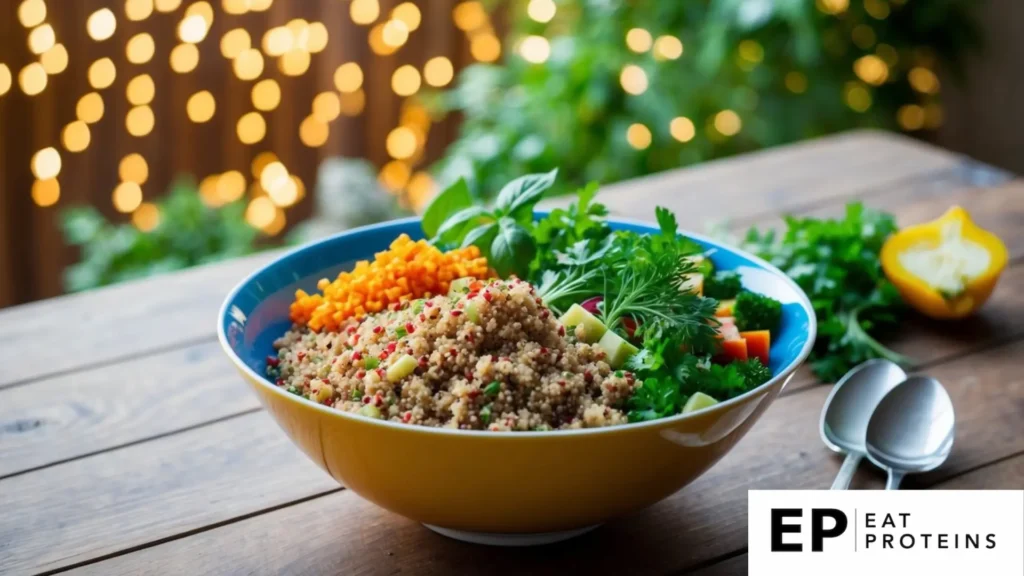
I find this Quinoa and Veggie Bowl to be an excellent low-histamine recipe. It’s simple to make and packed with nutrients.
Quinoa is a protein-rich grain that’s easy to digest. For this recipe, I use 1 cup of quinoa and 2 cups of water.
To start, I rinse the quinoa well. Then I bring the water to a boil, add the quinoa, and simmer for 15 minutes.
While the quinoa cooks, I chop up low-histamine veggies. My favorites are zucchini, carrots, and bell peppers. I use about 2 cups total.
I sauté the veggies in a pan with a bit of olive oil for 5-7 minutes until tender-crisp.
Once everything is ready, I combine the quinoa and veggies in a bowl. For extra flavor, I add a squeeze of lemon juice and a pinch of salt.
This dish takes about 25 minutes total to prepare. It’s filling, nutritious, and gentle on the digestive system.
2. Grilled Chicken with Herbs
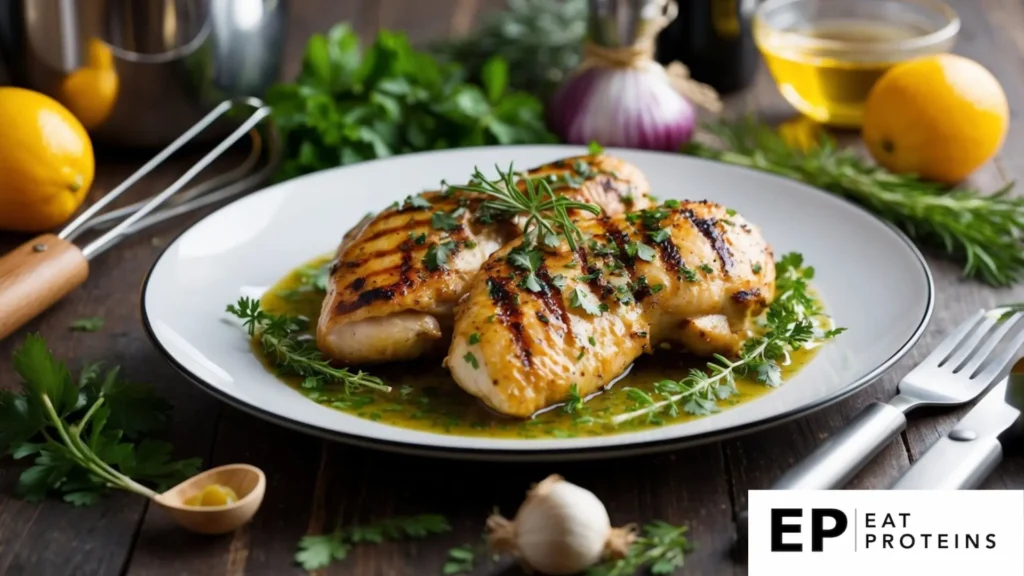
Grilled chicken with herbs is a tasty low-histamine meal I love. It’s simple to make and packs great flavor without triggering symptoms.
I start with boneless, skinless chicken breasts. These are naturally low in histamine when fresh. I marinate them for 30 minutes in olive oil, lemon juice, and fresh herbs like rosemary and thyme.
To cook, I preheat the grill to medium-high heat (around 375°F). I grill the chicken for 6-8 minutes per side until it reaches an internal temperature of 165°F.
The herbs add flavor without increasing histamine levels. Fresh herbs can be a great addition to low-histamine diets.
I like to serve this dish with a side of steamed vegetables or a simple green salad. It’s a nutritious meal that fits well into a low-histamine eating plan.
This recipe is versatile too. I can change up the herbs based on what’s available or my personal taste preferences. Basil, oregano, or parsley work well too.
3. Quinoa Salad with Fresh Veggies

Quinoa is a protein-rich seed that’s great for low histamine diets. It’s easy to cook and versatile, making it perfect for salads.
I find this recipe simple to make. First, I rinse 1 cup of quinoa and cook it in 2 cups of water for about 15 minutes. While it cools, I chop fresh veggies like cucumbers, bell peppers, and cherry tomatoes.
Next, I mix the quinoa and veggies in a large bowl. For dressing, I whisk together olive oil, lemon juice, and a pinch of salt. I pour this over the salad and toss gently.
This salad keeps well in the fridge for 2-3 days. It’s a great option for meal prep. I often make a big batch on Sundays for quick lunches during the week.
The fresh veggies add crunch and flavor, while the quinoa provides filling protein. This makes it a satisfying meal that’s kind to my stomach.
4. Baked Sweet Potato Fries
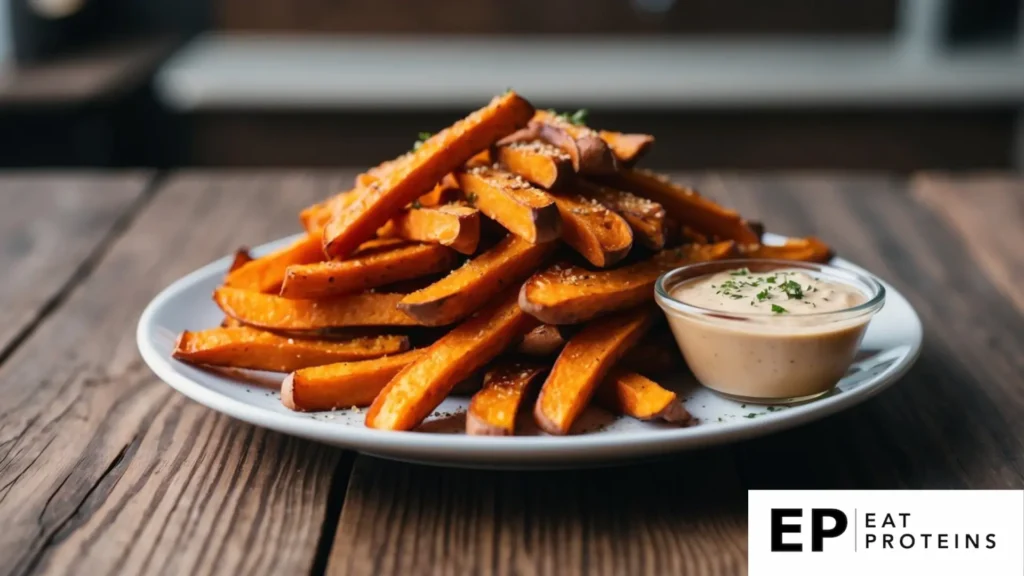
I love baked sweet potato fries as a tasty low-histamine snack. They’re easy to make and packed with nutrients.
To start, I preheat my oven to 400°F (200°C). Then I wash and peel 2 medium sweet potatoes.
I cut the potatoes into thin slices, about 1/2 inch thick. Thinner cuts make crispier fries.
Next, I toss the slices with 1 tablespoon of olive oil and a pinch of salt. I spread them in a single layer on a baking sheet.
I bake the fries for 15 minutes, then flip them over. I bake for another 10-15 minutes until they’re golden and crispy.
The cooking time may vary based on how thick I’ve cut the fries. I keep an eye on them to avoid burning.
These baked sweet potato fries are a great alternative to regular fries. They’re lower in histamine and still satisfying.
I enjoy them as a side dish or a snack. They’re best served hot and fresh from the oven.
5. Steamed Broccoli and Quinoa
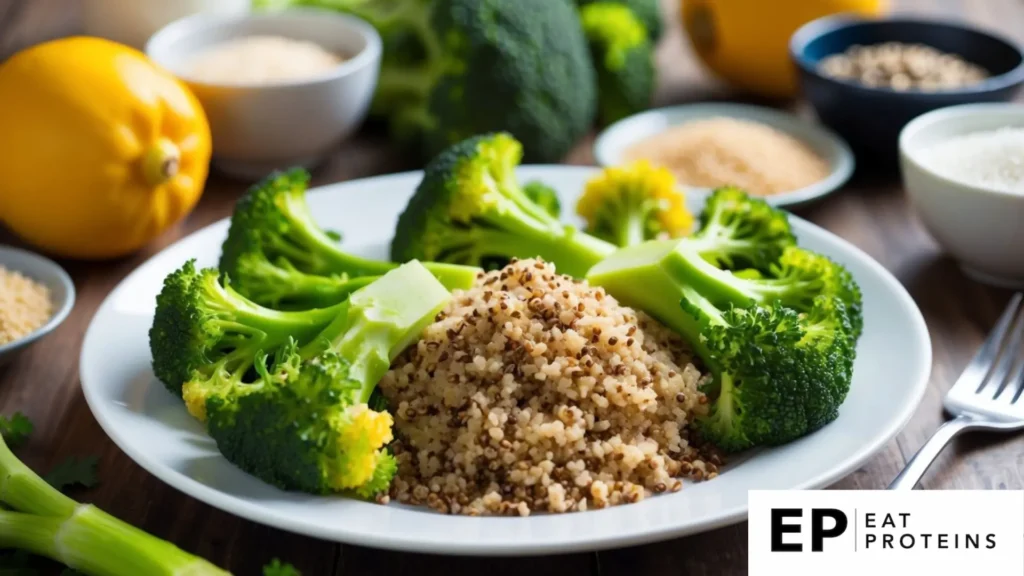
Steamed broccoli and quinoa is a simple, low-histamine meal that’s easy to prepare. I find it takes about 20 minutes to make.
To start, I rinse 1 cup of quinoa and add it to 2 cups of water in a pot. I bring it to a boil, then reduce the heat and let it simmer for 15 minutes.
While the quinoa cooks, I chop 2 cups of broccoli into florets. I place them in a steamer basket over boiling water for 5-7 minutes until tender-crisp.
Once done, I combine the steamed broccoli and cooked quinoa in a bowl. I can add a drizzle of olive oil and a pinch of salt if desired.
This dish is packed with nutrients. Broccoli offers vitamin C and fiber, while quinoa provides protein and essential amino acids.
6. Blueberry Smoothie
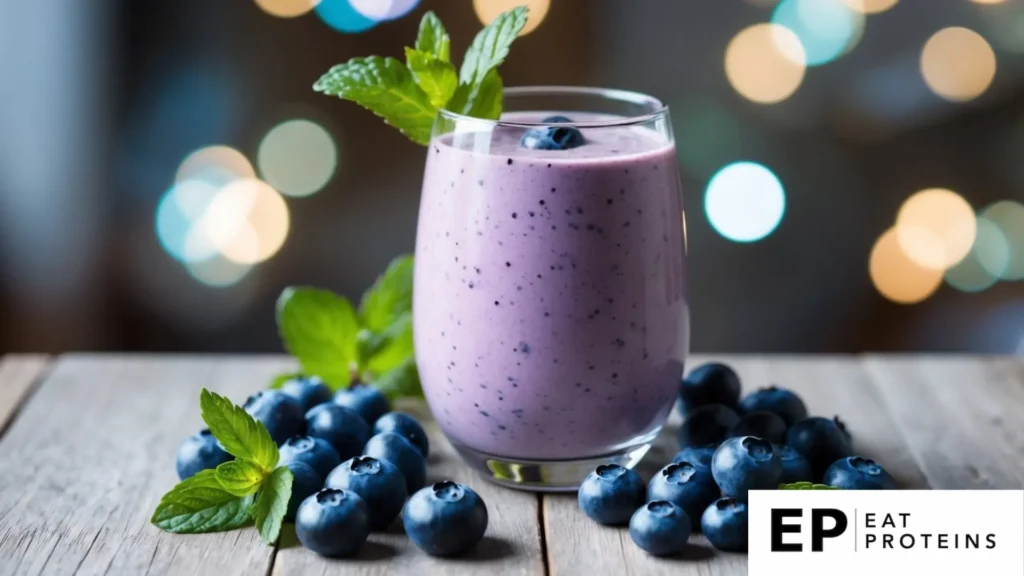
Blueberry smoothies are a tasty low-histamine option. I find them quick and easy to make, perfect for busy mornings or a refreshing snack.
To make this smoothie, I use 1 cup of frozen blueberries, 1 cup of coconut milk, and 1 tablespoon of honey. These ingredients are generally well-tolerated by those with histamine issues.
I start by adding the frozen blueberries to my blender. Next, I pour in the coconut milk. Finally, I add the honey for a touch of sweetness.
I blend the mixture for about 30-45 seconds until smooth. If it’s too thick, I add a splash more coconut milk and blend again.
This recipe yields one 16-ounce serving. It’s packed with antioxidants from the blueberries, which may help reduce inflammation.
I enjoy this smoothie as part of my low-histamine diet. It’s a simple way to add nutrients to my daily routine while keeping histamine levels in check.
7. Mango Chicken Salad
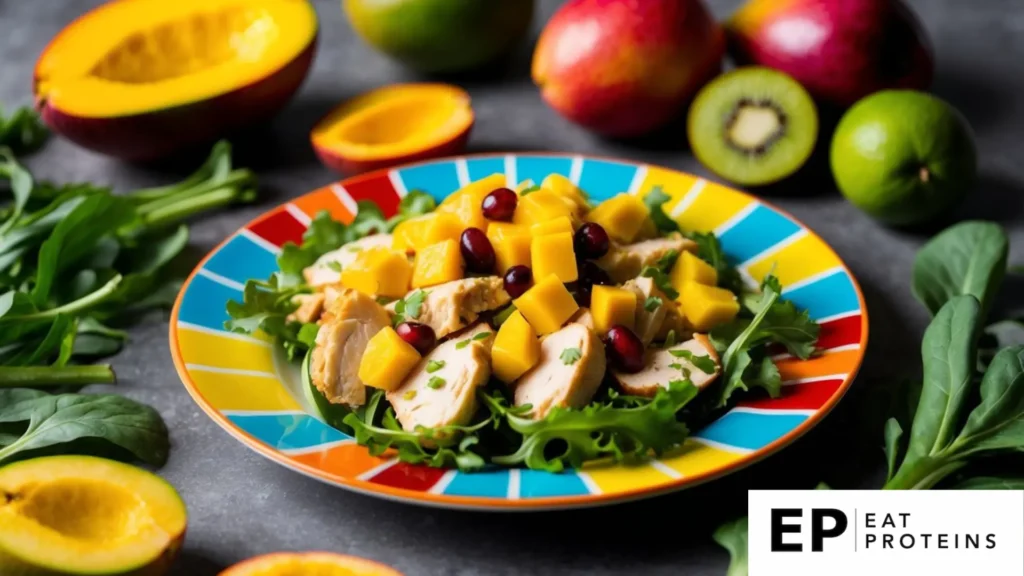
Mango Chicken Salad is a refreshing and low histamine dish that’s perfect for warm days. I find it easy to make and packed with flavor.
To prepare this salad, I start with 2 cups of diced cooked chicken breast. I mix it with 1 cup of ripe mango chunks, which add sweetness without triggering histamine reactions.
I then add 1/4 cup of finely chopped red onion and 1/4 cup of chopped fresh cilantro. These ingredients boost flavor without increasing histamine levels.
For the dressing, I whisk together 2 tablespoons of olive oil, 1 tablespoon of fresh lime juice, and a pinch of salt. This simple dressing complements the flavors without overwhelming them.
I gently toss all ingredients together in a large bowl. The salad is best served chilled for about 30 minutes before eating to let the flavors meld.
This Mango Chicken Salad is not only tasty but also nutritious. It provides a good balance of protein from the chicken and vitamins from the mango and herbs.
8. Cucumber and Avocado Salad
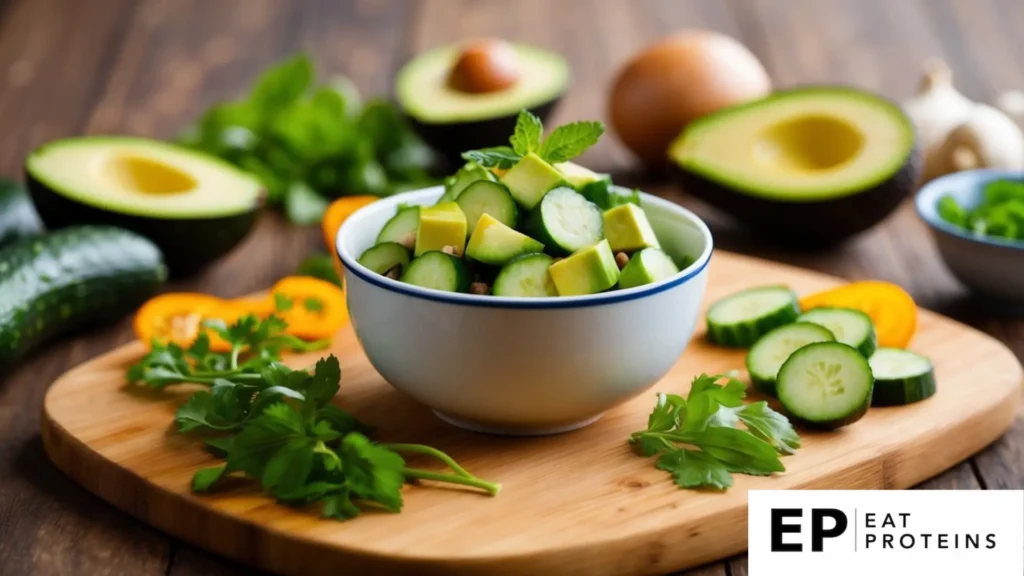
I love this refreshing cucumber and avocado salad. It’s super easy to make and perfect for a low histamine diet.
The main ingredients are cucumbers and avocados. Cucumbers are crisp and hydrating. Avocados add a creamy texture and healthy fats.
To make this salad, I start by chopping 2 cucumbers into bite-sized pieces. Then I cube 1 ripe avocado.
I combine the cucumber and avocado in a bowl. For dressing, I squeeze the juice of 1 lemon over the top. A pinch of sea salt enhances the flavors.
I gently toss everything together, being careful not to mash the avocado. The whole process takes about 10 minutes from start to finish.
This salad is best served right away. The lemon juice helps keep the avocado from browning too quickly.
I find this salad very satisfying. It’s light yet filling. The combination of textures and flavors is really enjoyable.
9. Zucchini Noodles with Pesto
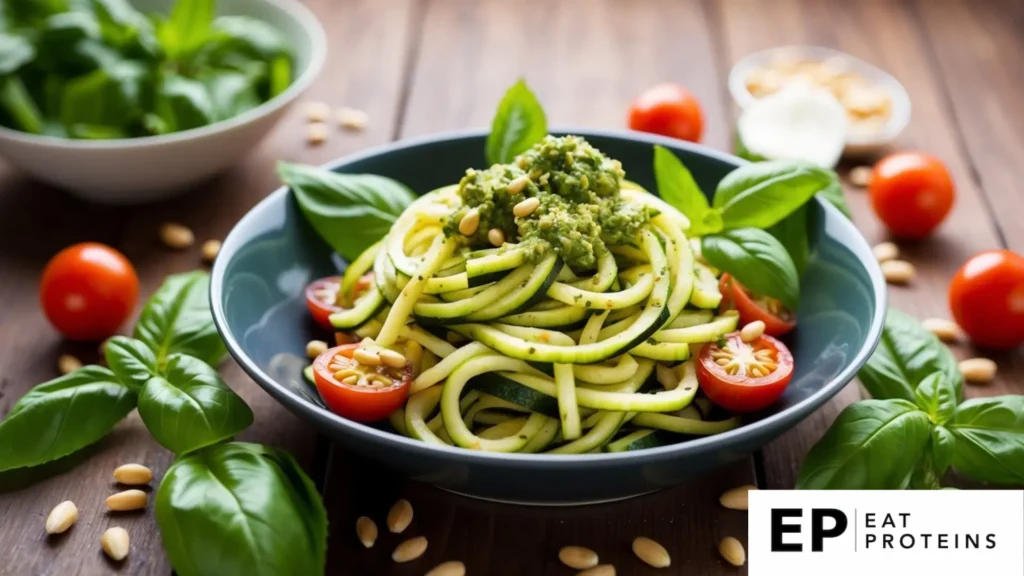
Zucchini noodles, or “zoodles,” are a tasty low-histamine alternative to regular pasta. I love how easy they are to make and how well they pair with homemade pesto.
To make zoodles, I use a spiralizer or vegetable peeler to create long, thin strips from fresh zucchini. This process takes about 5 minutes per zucchini.
For the pesto, I blend fresh basil, garlic, pine nuts, olive oil, and a pinch of salt. I avoid adding cheese to keep it low-histamine.
To prepare the dish, I sauté the zoodles in a pan with a bit of olive oil for 2-3 minutes. Then I toss them with the freshly made pesto.
This meal comes together in about 15 minutes total. It’s a quick, light, and refreshing option that fits well into a low-histamine diet.
I find this dish satisfying and flavorful. The zucchini noodles provide a nice crunch, while the pesto adds a burst of herbal freshness.
10. Papaya and Almond Milk Smoothie
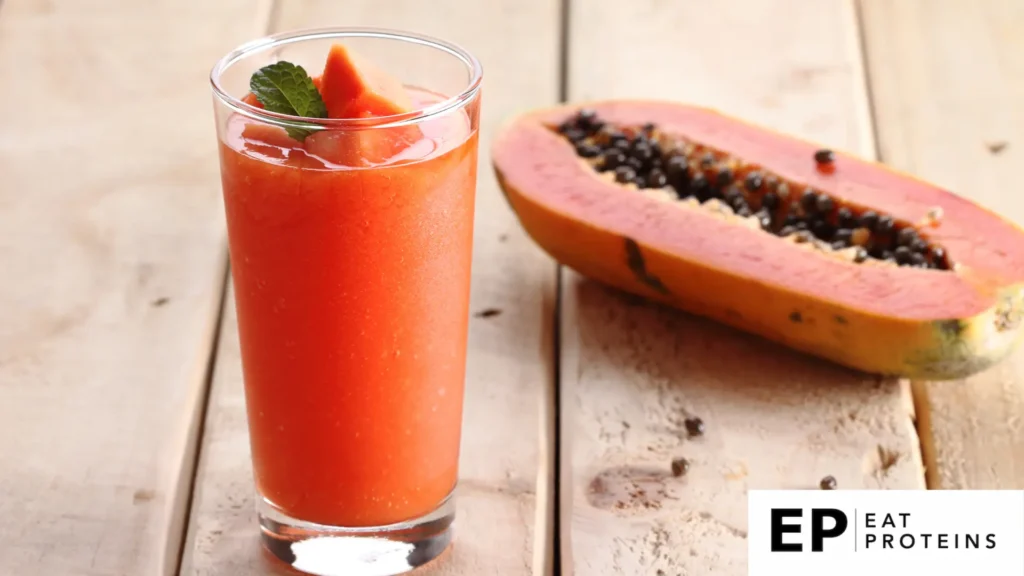
I love this refreshing smoothie as a low histamine option. It’s quick and easy to make, perfect for busy mornings or a light snack.
Papaya is known for its anti-inflammatory properties. When paired with almond milk, it creates a creamy and nutritious drink.
To make this smoothie, I use 1 cup of ripe papaya chunks, 1 cup of unsweetened almond milk, and 1/2 cup of ice.
I blend these ingredients for about 30 seconds until smooth. For extra sweetness, I sometimes add a teaspoon of honey.
This recipe serves one and takes only 5 minutes to prepare. It’s a great way to start my day or to enjoy as a midday pick-me-up.
11. Baked Salmon with Lemon
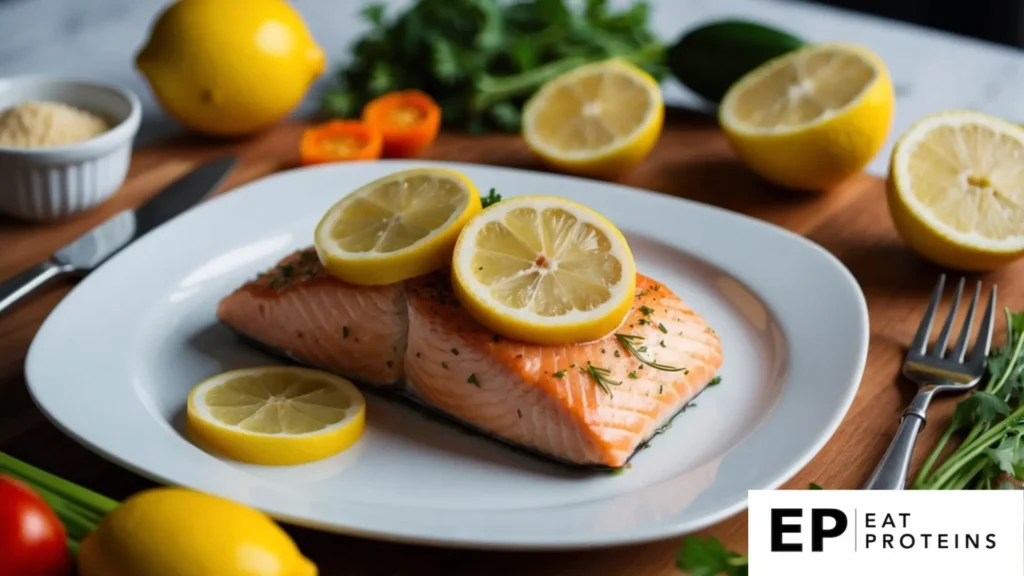
Baked salmon with lemon is a tasty low-histamine meal. I find it’s easy to make and packed with nutrients. Fresh salmon is low in histamine when cooked right away.
To make this dish, I preheat the oven to 400°F (200°C). I place a salmon fillet on a baking sheet lined with parchment paper. Then I squeeze fresh lemon juice over the fish.
Next, I sprinkle some salt and herbs on top. Dill or parsley work well. I bake the salmon for 12-15 minutes, depending on its thickness. The fish is done when it flakes easily with a fork.
This recipe is quick and simple. It takes about 20 minutes from start to finish. The lemon adds a bright, fresh flavor without adding histamine. I serve it with a side of steamed veggies for a full meal.
Baked salmon gives me a good dose of omega-3 fatty acids. These fats may help reduce inflammation in the body. I aim to eat fish like salmon twice a week as part of my low-histamine diet.
12. Roasted Garlic Mashed Potatoes
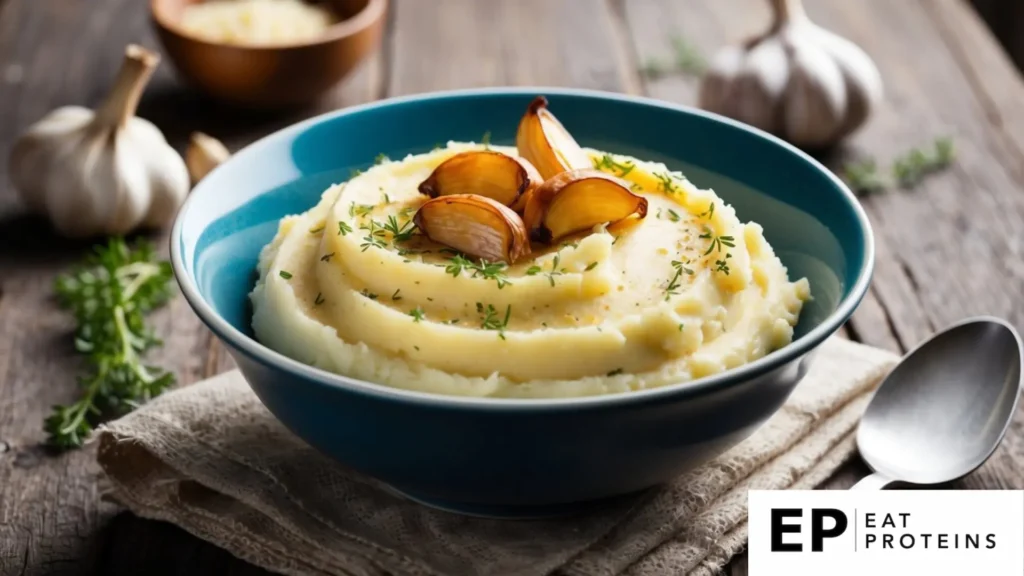
Roasted garlic mashed potatoes are a delicious, low-histamine side dish. I find them easy to make and perfect for those following a low histamine diet.
To start, I preheat the oven to 400°F. I cut the top off a whole garlic bulb, drizzle it with olive oil, and wrap it in foil. I roast it for about 30-40 minutes until soft and golden.
While the garlic roasts, I peel and cut 2 pounds of potatoes into chunks. I boil them in salted water for 15-20 minutes until tender.
Once the potatoes are done, I drain them and return them to the pot. I add 1/4 cup of milk, 2 tablespoons of butter, and the roasted garlic cloves (squeezed from their skins).
I mash everything together until smooth and creamy. Salt and pepper to taste, and the dish is ready to serve.
This recipe serves 4-6 people and takes about an hour to prepare. The roasted garlic adds a mellow, sweet flavor without increasing histamine levels.
What is a Low Histamine Diet?
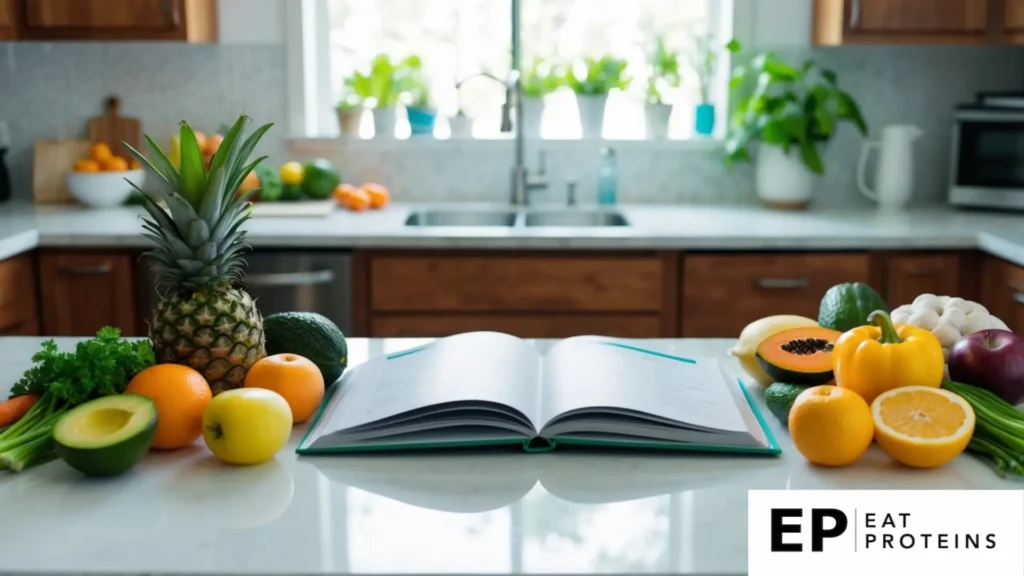
A low histamine diet can help manage symptoms for people with histamine intolerance. It involves avoiding foods high in histamine and those that trigger histamine release in the body. This approach aims to reduce overall histamine levels and improve quality of life.
Histamine is a chemical that plays many roles in the body. It’s part of our immune system and helps with digestion. Our bodies make histamine, but we also get it from foods. Some foods naturally contain histamine, while others can trigger its release.
Histamine acts as a neurotransmitter in the brain. It helps regulate sleep, appetite, and mood. In the gut, it aids in producing stomach acid. During an allergic reaction, histamine causes symptoms like sneezing and itching.
The body usually breaks down excess histamine using an enzyme called diamine oxidase (DAO). Problems can occur when there’s too much histamine or not enough DAO.
What are the Benefits of a Low Histamine Diet?
A low histamine diet can help manage symptoms of histamine intolerance. By reducing histamine intake, we may see improvements in various areas:
- Digestive issues: Less bloating, diarrhea, and stomach pain
- Skin problems: Fewer rashes and hives
- Headaches: Reduced frequency and intensity
- Breathing: Easier breathing and fewer asthma-like symptoms
This diet may also help with:
- Sleep quality
- Energy levels
- Mood stability
It’s important to note that a low histamine diet isn’t meant to be followed long-term. It’s typically used to identify trigger foods and then slowly reintroduce foods to find a balanced diet.
What are the Symptoms of Histamine Intolerance?
Histamine intolerance can cause a range of symptoms that may be mistaken for other conditions. Common signs include:
- Digestive issues: Nausea, vomiting, diarrhea, stomach pain
- Skin reactions: Itching, hives, flushing
- Respiratory problems: Runny or stuffy nose, sneezing, asthma-like symptoms
- Cardiovascular symptoms: Rapid heartbeat, low blood pressure
Other symptoms may include:
- Headaches or migraines
- Fatigue
- Anxiety or panic attacks
- Menstrual cramps
Symptoms can vary from person to person and may worsen after eating high-histamine foods or during times of stress. Keeping a food diary can help identify triggers and manage symptoms more effectively.
How to Follow a Low Histamine Diet?
A low histamine diet requires careful planning and preparation. I’ve found some key strategies that can make it easier to stick to this diet while still enjoying delicious meals.
How to Plan Meals on a Low Histamine Diet?
I always start my week by planning out my meals in advance. This helps me avoid reaching for high-histamine options when I’m short on time. I focus on fresh ingredients and simple recipes that I can prepare quickly.
I make big batches of low-histamine staples like quinoa or roasted vegetables. These keep well in the fridge for a few days and make great bases for quick meals.
Freezing portions of low-histamine meals is another time-saver. I can thaw and reheat them on busy days without worrying about histamine buildup.
I always keep a list of safe snacks handy. Fresh fruits, raw vegetables, and homemade dips are my go-to options when hunger strikes between meals.
How to Shop for Groceries on a Low Histamine Diet?
I’ve learned to shop smart for my low-histamine diet. I always check ingredient labels carefully, even on foods I’ve bought before. Manufacturers can change recipes without notice.
I focus on the freshest produce available. Fruits and vegetables start to accumulate histamine as they age, so I choose items that look newly stocked.
I buy smaller quantities more often instead of bulk shopping. This ensures I’m always eating the freshest food possible.
Frozen fruits and vegetables are great options. They’re often frozen at peak freshness, locking in nutrients and keeping histamine levels low.
I avoid pre-packaged or processed foods as much as possible. These often contain hidden histamine-triggering ingredients or preservatives.
What Kitchen Tools are Helpful for a Low Histamine Diet?
Having the right tools makes following a low-histamine diet much easier. I use a high-quality blender to make fresh sauces and dips, avoiding store-bought versions that might contain preservatives.
A good set of glass storage containers is essential. I use these to store leftovers and meal prep components. Glass doesn’t absorb odors or flavors like plastic can.
I invested in a vacuum sealer. This lets me portion and freeze meals without exposing them to air, which can increase histamine levels.
A rice cooker with a timer function is incredibly helpful. I can set it up in the morning to have fresh, low-histamine grains ready when I get home.
